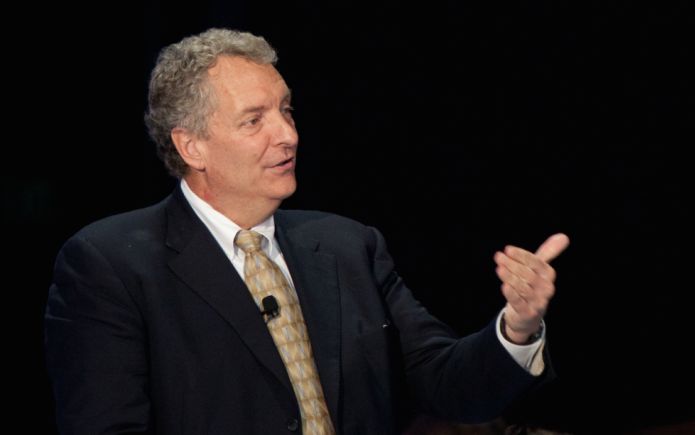In 1997, Netscape was the browser of choice; Motorola StarTAC dominated cell phone popularity; the Apple PowerBook led in innovative laptops; cordless home phones emerged; Sony PlayStation with a 128k memory card was state of the art; Windows 95 was released.And I published the book Human Resource Champions,the ideas therein helped to define the HR business partner in terms of roles and outcomes within an organization.
In the ensuing 20 years, much has changed in the world of technology; and much has changed in the world of HR.The business partner concept has dramatically evolved (transformed, been disrupted, evolved, or whatever word you choose) from roles and outcomes to a logic of how HR delivers value to employees, organizations, customers, investors, and communities through individual talent (competence, workforce, people), leadership throughout an organization, and organization capabilities (culture, workplace, systems). In these 20 years, my colleagues and I have published over 25 books and hundreds of articles, chapters, research monographs, and blogs, and have given hundreds of talks on how HR is not about HR but about delivering value to multiple stakeholders.
Often critics of HR compare the 1997 HR business partner 1.0 model with the 2018 business requirements, assuming that HR logic and ideas have not evolved. This would be like saying the StarTAC phone should perform the functions of today’s smartphones. So it is useful to capture the concepts defining business partner 2.0.
It is difficult, if not impossible, to summarize all the business partner 2.0 ideas, but the following table highlights thirteen pivots (because they build on the past, but they could be called disruptions or evolutions as well) each of which has been the focus of our (and many others’) thinking, research, writing, and practice.
We are incredibly grateful for HR professionals and thought leaders whose work we so readily assimilate, learn from, and build upon.The ongoing evolution of HR to a true value-creation stage comes from so many innovators.We appreciate their work and are grateful to be part of the HR value-creation movement.
HR’s evolution will continue as current business issues place HR centerstage (e.g., digital information age, #MeToo movement) and HR needs to continually upgrade to respond; but it is useful to move at this time from business partner 1.0 to business partner 2.0.
| Dimensions and questions of the business partner logic | Pivots (disruptions or evolution) of our point-of-view on this dimension. |
| 1. HR Value Added:
What value does HR deliver to an organization? |
The type of value HR delivers has evolved from efficiency to functional excellence to strategic HR to outside-in. |
| 2. HR Context:
What are the contextual factors shaping HR’s business centrality? |
HR is not about HR but the business.Business requires acknowledging and appreciating:
|
| 3. HR Stakeholders:
Whom does HR serve? Who are the “customers” of HR? |
HR stakeholders have evolved from internal (employees, line managers, organization) to external (customers, investors, community). |
| 4. HR Outcome—Talent:
How can HR help increase employee productivity and experience (well-being)? |
Improve talent (people, experience, workforce) through:
|
| 5. HR Outcome—Organization:
How can HR help build a more competitive organization? |
Organization has four times the impact on business results than that of the individual talent!Organization thinking has evolved through these stages:
|
| 6. HR Outcome—Leadership:
How can HR build better leadership throughout the organization? |
Leadership matters, and understanding leadership evolves from:
|
| 7. HR Strategy:
What is the strategy of the HR department? |
An HR function or department requires a strategy that answers three questions:
|
| 8. HR Organization:
How should the HR department be organized? |
The structure of the HR department is built on three principles:
1. Separate HR essential/transaction work (increasingly delivered with technology) from strategic work (delivered by HR professionals and line managers). 2. The HR organization should match business strategy and organization:
3. In most large firms, businesses have a matrix or diversified/allied strategy and structure, so HR operates as a professional services firm within the organization. |
| 9. HR Practices:
How should HR design and deliver HR practices? |
A host of HR practices exist around people, performance, information, and work.The criteria for HR practices are:
|
| 10. HR Competencies:
What are the required skills for HR professionals? |
The required competencies of HR professionals have evolved over the last 30 years.In response, HR professionals have dramatically increased their competencies over this time frame. It is not just about competence but matching HR competencies to the desired outcomes:
|
| 11. HR Technology (Digitalization):
How can HR use technology to leverage digital information? |
HR plays two roles in the digital space:
|
| 12. HR Information or Analytics:
How do we define HR analytics? |
HR analytics is accessing and using information to improve HR value creation.This work has evolved through four stages:
|
| 13. HR Work Style:
How do HR professionals work with each other in HR and with others in their organization? |
While HR structure matters in assigning roles and accountabilities, HR professionals need to build relationships with each other inside HR and with those outside HR.Relationships require:
|









